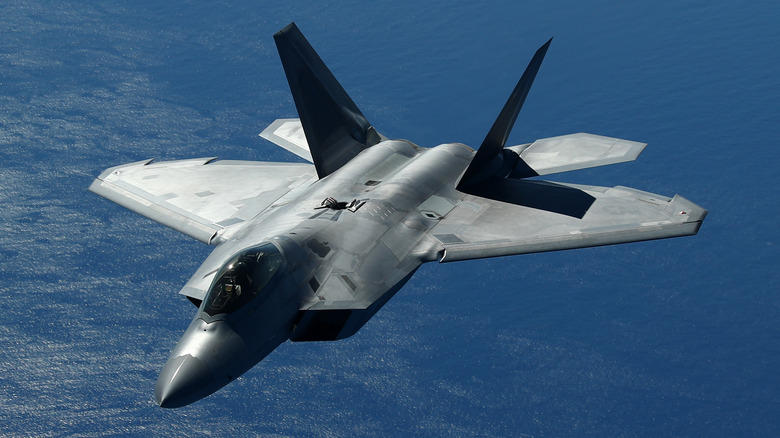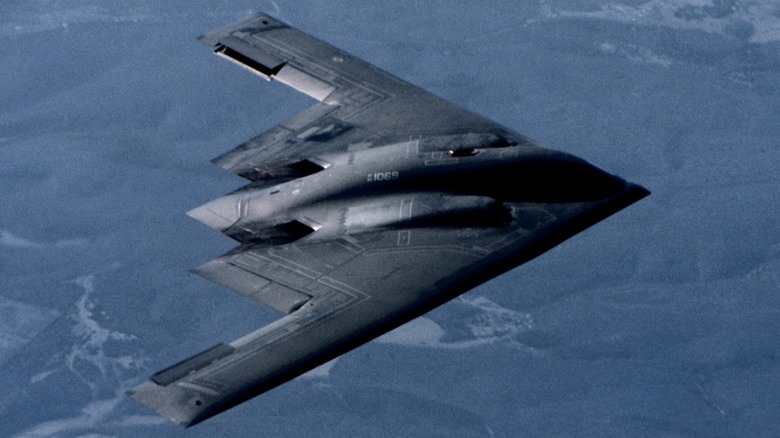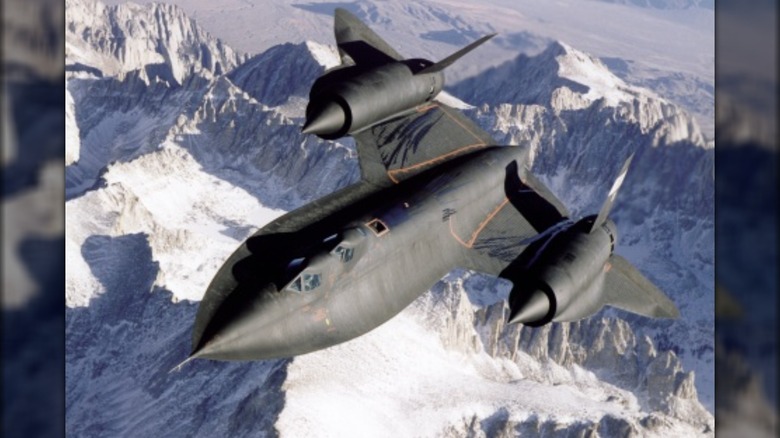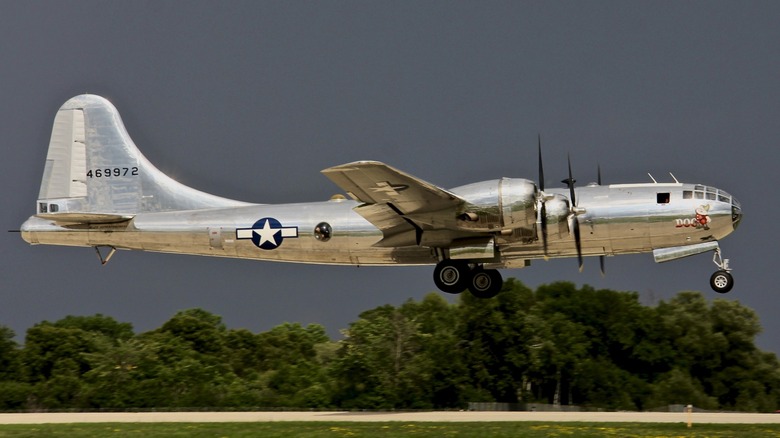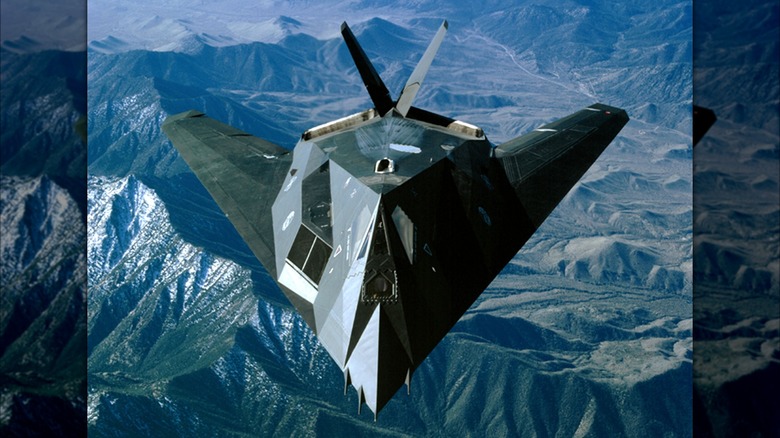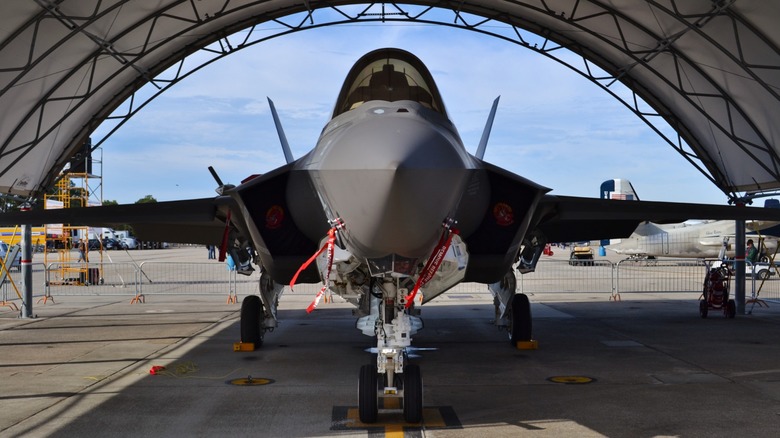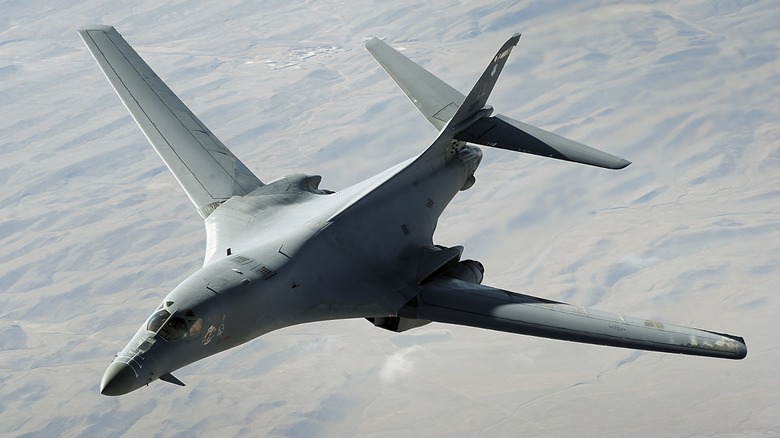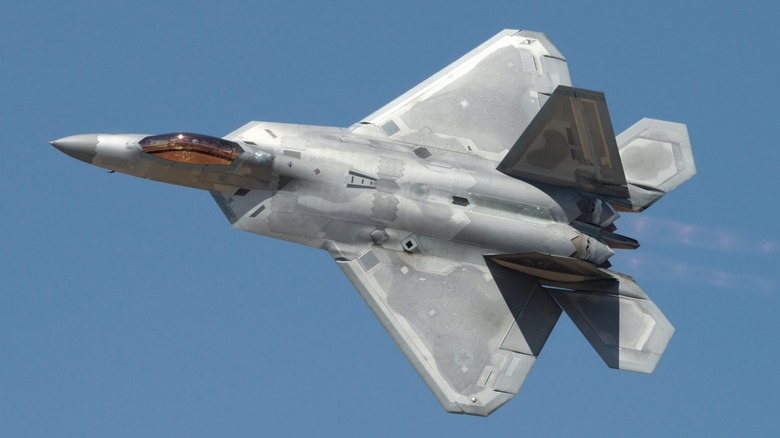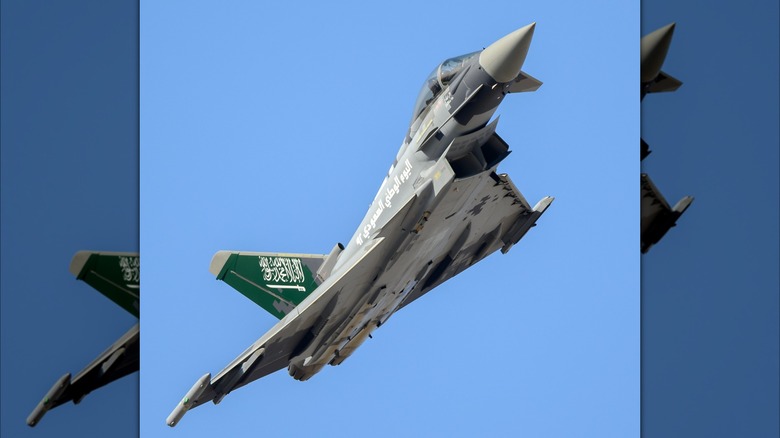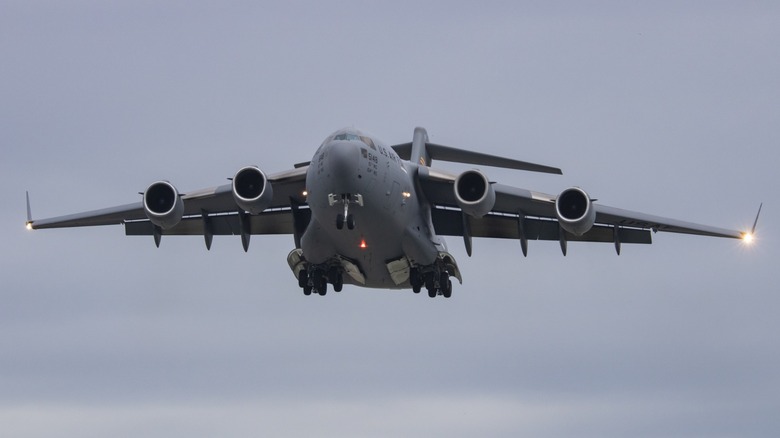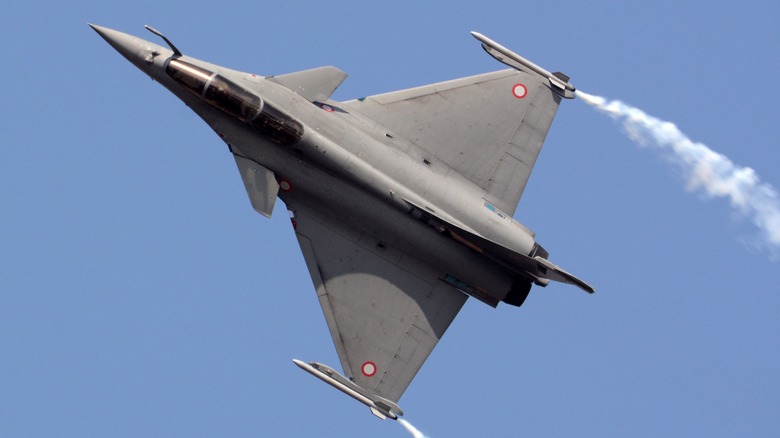The 10 Most Expensive Military Aircraft Ever Built
Ever since the Wright brothers first took to the air at Kitty Hawk, airplanes have been majestic machines of increasing levels of development and sophistication. However, these increasing levels of technology and complexity raise the cost of manufacturing to make aircraft among the most expensive machines of the modern age. Furthermore, safety is a paramount concern, which has prompted a byzantine labyrinth of regulations intended to reduce the risk of tragedy to as near to zero as possible. Safety also increases cost, which further raises the cost of designing and building aircraft.
While aircraft exist for people to purchase ranging from a hobbyist pilot to an international airline, the most sophisticated — and therefore expensive — models are built for military purposes. Military aircraft also has a history dating back to the Wright brothers when the U.S. Army bought its first aircraft, a 1909 Wright Military Flyer. The importance of aircraft to a modern military structure has since become crucial to national defense and the execution of offensive operations in any location.
That said, governments have a unique ability to fund wildly expensive projects because of the need to fulfill objectives rather than turn profits. This may sometimes lead to rampant waste, but it has also led to some mighty expensive aircraft. These are 10 of the most expensive military aircraft built to date.
B-2 Spirit
Developed as a Cold War project to gain the ability to bypass Soviet air defense using stealth technology, the B-2 Spirit, built by Northrop Grumman, proved to be a powerful weapon in the fleet of the U.S. Air Force. Development began during a heated time of diplomatic engagement between Eastern and Western powers, but by the time it took its first flight in 1989, the end of the Cold War was in sight. The first deliveries of service-ready aircraft commenced in 1993, and the first combat engagement occurred in 1999 with NATO engagement over Kosovo.
The B-2 Spirit is a flying wing design, which means it flies without any tail whatsoever. The design came from research developed from captured Nazi aircraft development plans after WWII. However, the flying wing design is highly unstable due to the lack of a rudder, so it was not feasible until exceptionally sophisticated computer systems could be developed to make countless adjustments to the elevons and rudders.
The flying wing design contributes to its stealth capabilities along with radar-reflective paint and a lack of hard edges or seams elsewhere. Of course, all of this technology is costly for the U.S. government. Each aircraft costs in excess of $2 billion, making them the most expensive airplane built to date. Furthermore, the operating costs of a single aircraft reach an astounding $163,000 per hour, which accounts for none of the staggeringly expensive array of weapons that could be carried onboard, including those with nuclear warheads.
SR-71 Blackbird
The plane that would become the SR-71 Blackbird started as a CIA aircraft known as the A-12 Oxcart. After Gary Powers had been shot down in a U-2 spy plane over the Soviet Union, intelligence officials looked for an alternative to gather intelligence from deep within Soviet territory. They turned to Lockheed's experimental division, Skunk Works, to develop the next big thing in aerial espionage. To keep cover on Oxcart, the CIA funded the Lockheed development team by mailing checks of up to $1 million to head engineer Kelly Johnson's house in Encino so there would be no direct paper trail leading to a secret aircraft development program.
The plane turned into a success and was eventually adopted by the Air Force, which used it extensively in many conflicts, including Vietnam. The Air Force SR-71 has a top speed of Mach 3.3 and a service ceiling of 85,000 feet, making it the fastest jet-powered aircraft ever flown. Not only can it outrun anything on its tail, it can fly higher than nearly everything else in the sky, which is why it was only ever used for reconnaissance and not equipped with any weapons.
Each plane cost $34 million to build in the 1960s and required specialized components for nearly every inch of the airframe. It was also incredibly expensive to operate, including the need for a specially formulated fuel used by no other aircraft. Each hour of operation costs taxpayers $200,000, which is primarily the reason for its retirement.
B-29 Superfortress
At the onset of WWII, the most powerful long-range bombers in the U.S. Army Air Corps were the B-17 Flying Fortress and B-24 Liberator. Although both were advanced and capable bombers, the extreme distances posed by fighting a war in Europe and Asia meant the military needed something with better capabilities. Boeing was already working on the next bomber by 1939, and what would become the B-29 Superfortress took its first flight in late 1942, nearly a year after the declaration of war on Japan.
The B-29 had been ordered in large quantities before one had even flown its first flight. It came ready to fight with many new features including a pressurized crew cabin and centralized fire control system, and it was capable of delivering up to 20,000-pound payload of munitions up to 1,500 miles from base. This aircraft, of which 3,980 were built, participated in bombing runs in every theater of the war, proving to be a formidable weapon against the Axis powers.
These planes were built with urgency under wartime production with all available resources diverted toward the program. In the end, the cost per plane including all development costs amounted to $930,000 per unit. It was among the most costly projects undertaken during the war at $3.7 billion, nearly double the $2 billion price tag of the Manhattan Project — which relied on a B-29 to deliver the weapon.
F-117 Nighthawk
Once the idea of building military aircraft that could evade radar detection became popular, military spending on its research and development seemed to come from an endless well. The first aircraft developed with a genuinely small radar signature – about the size of a hummingbird — was the F-117 Nighthawk developed by Lockheed.
The top secret project from which the F-117 came began in 1975 as engineers tested ways to deflect radar signals away from aircraft instead of back to its source. However, the design they came up with worked but made for an oddly shaped plane that was inherently unstable and creating a shape more like modern stealth aircraft required calculations too complex for the computers available at the time. However, new computerized flight controls corrected the stability problems and prototypes proved their viability in testing.
The Air Force took delivery of the first aircraft for testing in 1981 and subsequently entered them into service, although they were kept secret for years until the Air Force first publicly revealed the existence of a stealth aircraft in 1988. The F-117 would go on to serve for many years, publically proving its worth during Operation Desert Storm in 1991. In 1999, Lt. Col. Dale Zelko was shot down over Serbia by a surface-to-air missile when a radar operator detected it while the weapons bay doors were open, causing the only combat loss of an F-117.
This ground-breaking aircraft cost taxpayers $42.6 million per plane and flew until all 59 units built had been retired by 2008.
F-35 Lightning II
Currently serving in the armed forces of the U.S. and several other allied nations, the F-35 Lightning II is the most advanced multirole jet fighter available on the planet to date. Developed as the successor to the F-22 Raptor, the F-35 incorporates stealth construction with highly sophisticated electronic warfare components and an impressive array of traditional jet aircraft technology. Furthermore, while other fighter jets can fly faster or carry more weapons, none have the advanced communications suite and the huge amount of information available to pilots, which gives them a distinct advantage over our adversaries.
The contract for a new stealth aircraft was awarded to Lockheed Martin in 2001 and the new jet first flew just five years later. Aircraft were eventually delivered around 2012, with three variants developed for the Air Force, Marines, and the Navy, which received a variant capable of vertical takeoff and landing. As an all-encompassing program meant to supply three service branches to replace multiple aging aircraft in inventory as well as foreign customers, the F-35 program was very expensive from the start. However, as it progressed, cost overruns plagued the contract, causing many to characterize it as a defense boondoggle eating up military allocations.
By 2023, estimates of the overall program exceeded $1.7 trillion, and it was found to have double the operating cost of an F/A-18E/F Super Hornet at $44,000 per hour. The F-35 is still in production and the purchase price can range from $75 to $90 million, depending on which variant is chosen.
B1-B Lancer
The origins of the B1-B Lancer program date back to the early '70s when the Air Force wanted a new supersonic high-altitude bomber. After prototypes had been produced and tested, the program was canceled in 1977, only to be revived again in 1981. This resulted in aircraft being delivered by 1985 that first engaged in combat operations over Iraq in 1998.
The B1-B is a large aircraft that can fly up to a speed of Mach 2.2 and carry a payload of 74,000 pounds. It is a conventional swept-wing aircraft that later received modifications to reduce its radar visibility, which reduced its maximum speed to Mach 1.2. It is a highly capable long-range bomber that holds nearly 50 records for its impressive performance and payload capacity, thanks to having four General Electric turbofan engines and a massive 137-foot wingspan when extended forward. Although its development began in the '70s, it is still in use today and no plans for retirement are publicly known.
As a long-range heavy bomber, the B-1B requires a significant amount of technology to develop and produce. Furthermore, it is not the kind of aircraft that will be produced in large quantities, which further elevates the price. The U.S. Air Force currently holds 64 units in its inventory, and they were procured for $317 million each.
F-22 Raptor
While the F-117 Nighthawk is often credited as the first stealth fighter, that is actually a misnomer as it was developed as an attack aircraft. The title of the first stealth fighter goes to the F-22 Raptor. This aircraft began development in the early '80s and a prototype first took to the air in 1990. Initial production aircraft arrived in 2001 and the program was fully operational by 2005.
Meant to supersede both the F-15 Eagle and F-16 Fighting Falcon, the F-22 was built for multirole fighter capabilities with stealth capabilities interwoven into the airframe. It is a fast and highly maneuverable aircraft that uses two Pratt & Whitney engines that can power it up to a maximum speed of Mach 1.8 but also has supercruise, which allows it to achieve Mach 1.5 without the use of fuel-hungry afterburners. Its armament is carried within its weapons bays to ensure low observability and can be outfitted with up to eight guided missiles and two 1,000-pound bombs in addition to a 20mm Gatling gun.
The Air Force had originally planned to procure 648 F-22 aircraft when it commenced with the project in the early '90s, but that figure was first reduced to 438 and then to 339 by 1997. Eventually, 195 units were built and the program was wound down. Total program cost over its entire course exceeds $79 billion, with a per unit cost of $143 million. Although it was built for air-to-air combat, the first target eliminated in 20 years was a rogue Chinese spy balloon shot down in early 2023.
Eurofighter Typhoon
Although several European countries have well-developed aerospace industries, the United Kingdom, Germany, Italy, and, later, Spain formed a consortium to create a new multirole fighter jet that worked to use their collaborative strengths to lower development costs for serial production, beginning in 1986. After years of negotiations and multiple designs evaluated and changed, a final design was finally approved for production in 1997 with its first flight in 2002.
The new European fighter was an advanced multirole jet with a delta-wing design with forward canards for added stability and twin jets for propulsion. Though not a stealth fighter, the Eurofighter Typhoon is a complex and capable showcase of European technology. Its top speed is Mach 1.7 and it can carry a wide array of weapons including guided missiles and bombs that are complemented by a pair of 27mm Mauser cannons. Furthermore, advanced sensors and communications for situational awareness, electronic warfare, and advanced communications are also integral to the Typhoon's overall combat readiness.
While the Typhoon was crafted to replace aging aircraft in the inventories of each member country's respective air forces, it is also sold to foreign buyers, including Austria, Kuwait, and Oman. The individual unit cost of a Typhoon is $117 million, but when accounting for the development and initial procurement costs, that figure rises to just over $200 million.
C-17A Globemaster III
Sophisticated fighter jets that cost obscene amounts of money generally get all the attention and fanfare, but the real workhorses that keep the military ready for action are the cargo haulers. America's most capable tractor-trailer of the sky is its Boeing C-17A Globemaster III, one of which was famously seen during the chaotic Afghanistan withdrawal carrying 640 refugees from Kabul airport in 2021. However, the C-17 is usually carrying supplies and heavy equipment
While the C-130 Hercules is the aircraft of choice for most U.S. military hauling operations, nothing compares to the C-17A Globemaster III for really heavy and oversized items. The payload capacity at its limit is 107,900 pounds and it is often used for delivering tanks, MRAPs, and even other planes or helicopters in the cargo compartment measuring 85 feet long, 18 feet wide, and 12 feet tall. Loading can be accomplished from the rear loading bay door or through the raised nose cone section. Furthermore, it can take off and land on runways as short as 3,500 feet — a Boeing 737-700 requires a runway length of at least 5,500 feet.
The C-17A Globemaster III began development in the '80s and the first flights took place in 1991. It has been a reliable and safe aircraft ever since, but at a cost of $340 million per unit, it is one of the most expensive aircraft in the American military.
Dassault Rafale
France was initially to be part of the Eurofighter consortium but later withdrew and opted to go it alone in creating a new fighter jet. French aerospace already had a long history of building supersonic fighter jets, so it had a wealth of experience with which to draw upon.
Dassault Aviation won the contract and the first flight commenced in 1986, although the Rafale didn't enter service in 2001. The Ministry of Defense opted not to make it a stealth aircraft due to the extraordinarily high cost but incorporated many low observability technologies into the design. This included altering the shapes of many components such as air inlets, tailfin design, and cockpit. The delta-wing aircraft uses canards for stability at low speeds and is aircraft carrier certified. The fly-by-wire system uses advanced flight controls while pilots enjoy sophisticated avionics, making the Rafale a potent and highly advanced war machine.
The French Armed Forces are the primary operators of the Rafale, but it is also available for export. While countries such as Egypt, Qatar, and Greece have purchased many for their fleets, Dassault has had some difficulties with sales to other nations due to the more than $100 million price tag per airframe. Furthermore, the full stealth American F-35 sells for less than $80 million, making a highly advanced but non-stealth Rafale a hard sell — although it remains a viable option for countries for whom the American Department of Defense blocks the sale of specific military hardware to.
